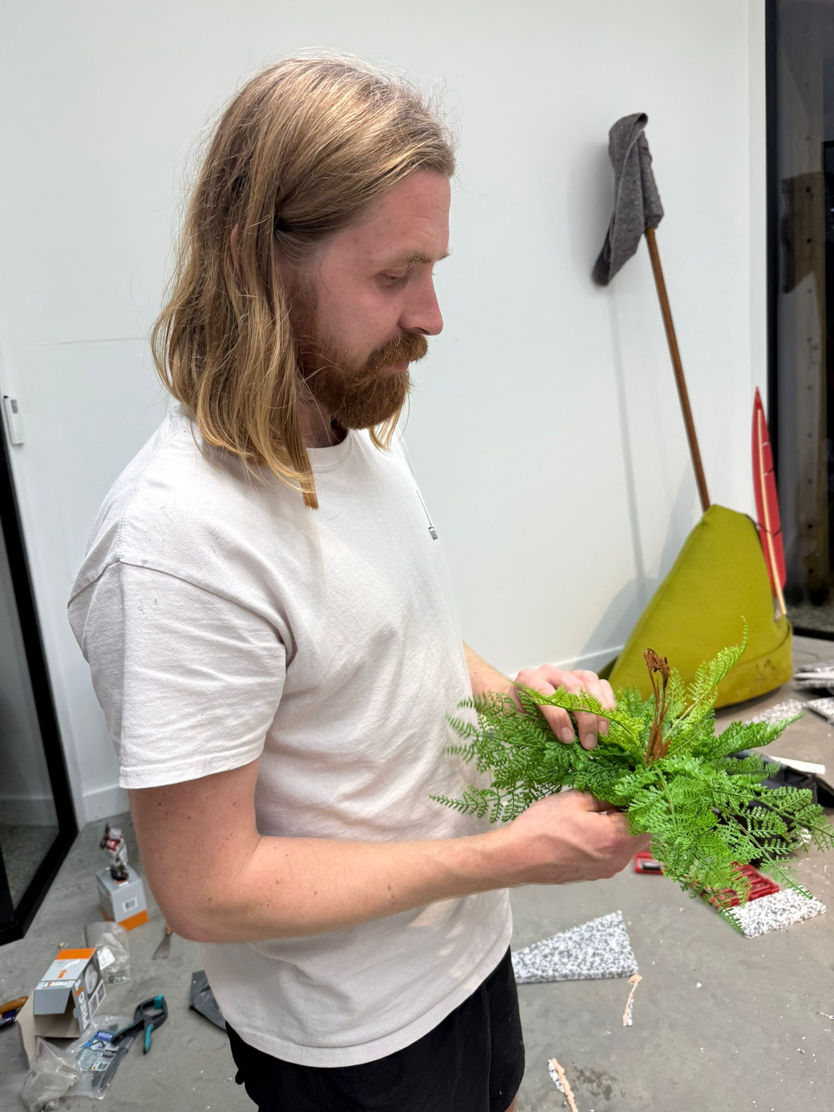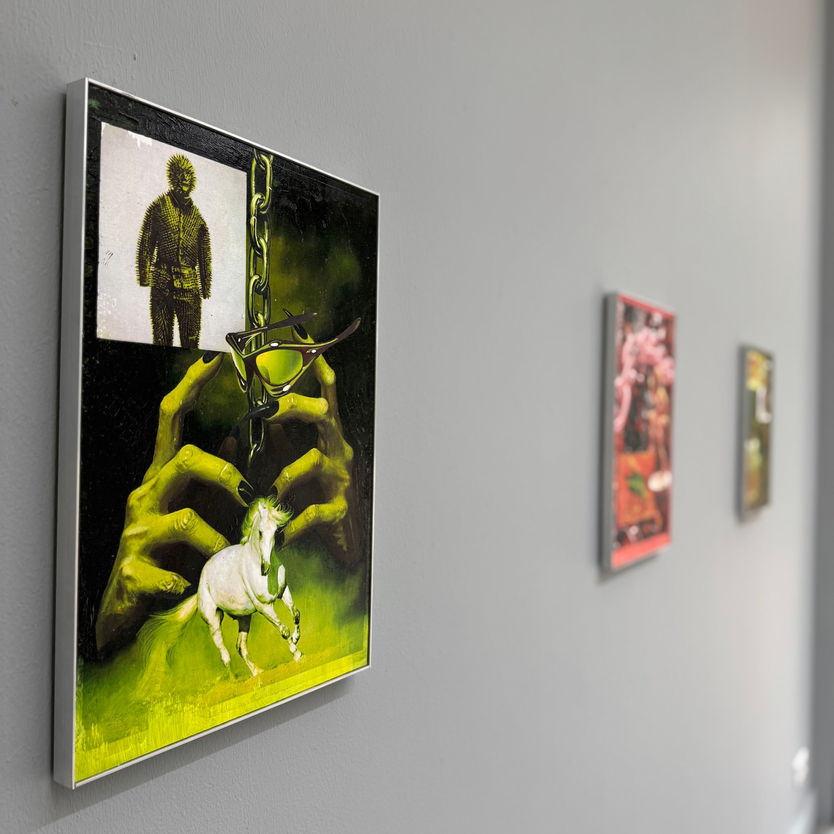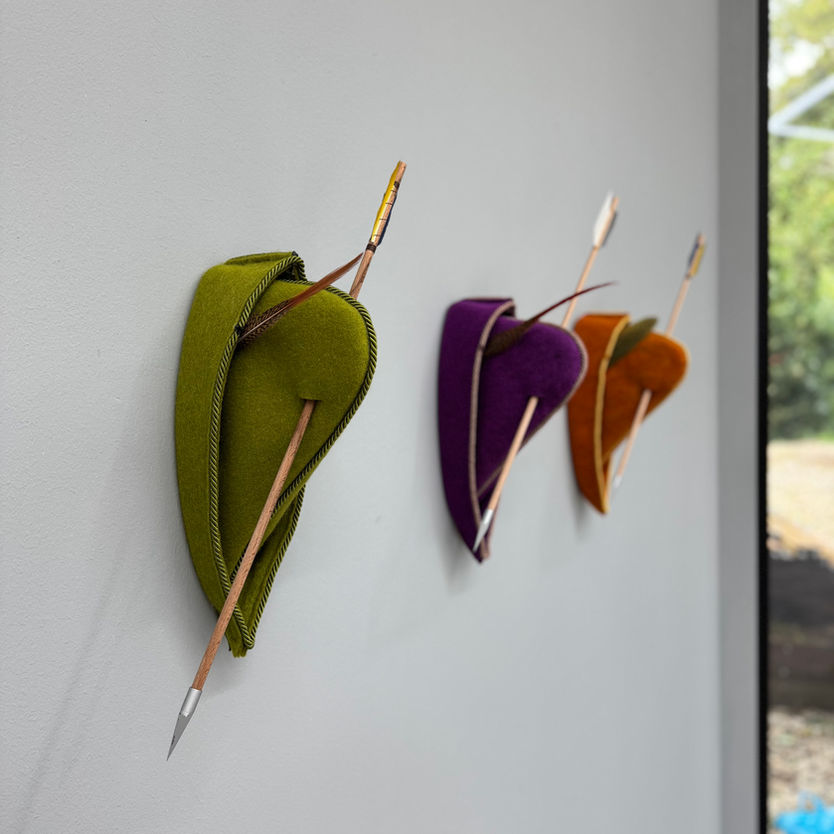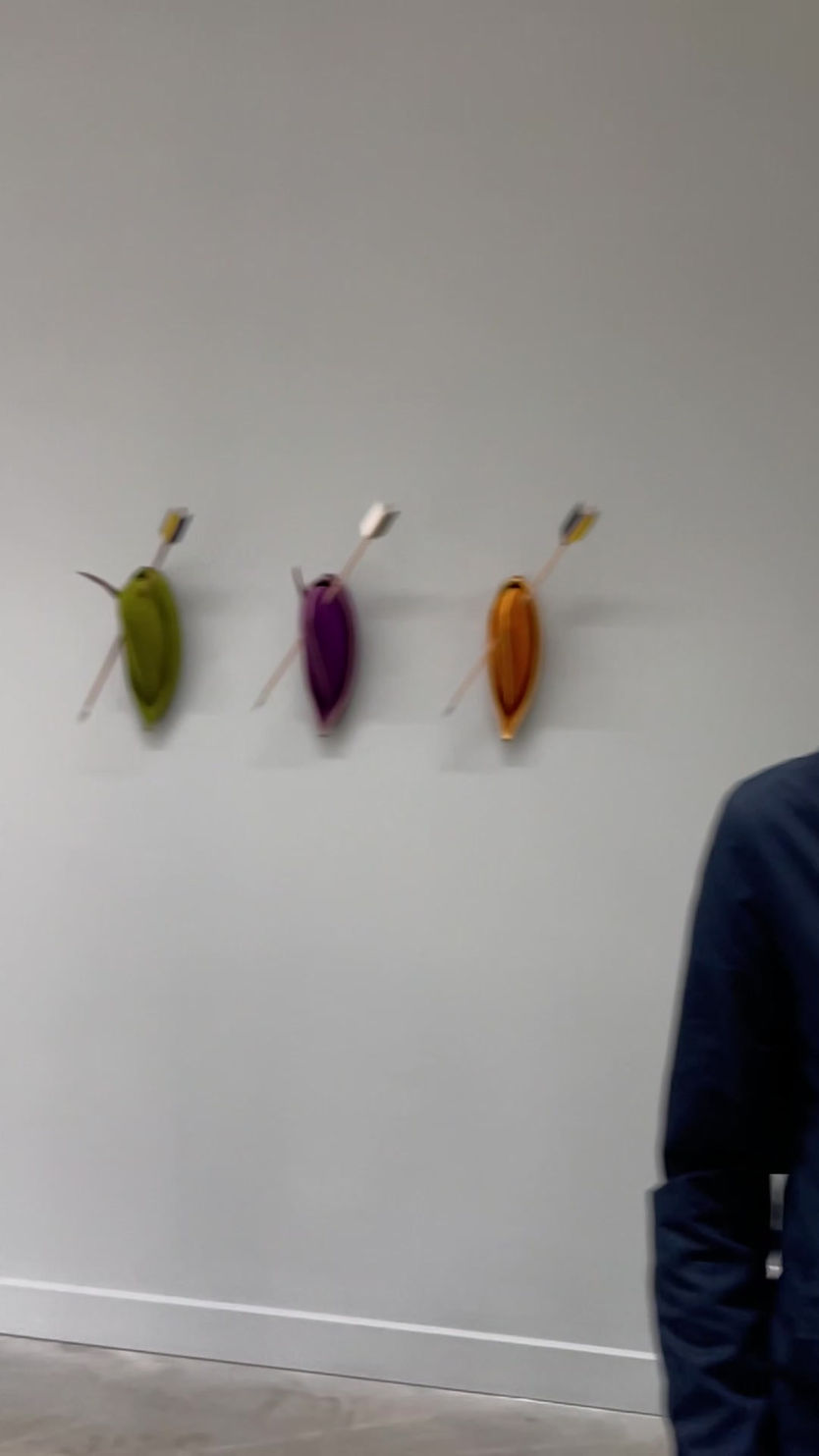Add to Cart
Tom Putman and Peer Vink
Peer Vink and Tom Putman collaborate for the first time in an installation that balances on the edge between seduction and unmasking. Their point of departure is the shopping mall—not as a nostalgic tribute, but as a status icon of their youth that has not withstood the test of time and whose shine has faded. Think of the sets from old spaghetti westerns: impressive from a distance, almost a reality of their own, until you come closer and discover that behind the façades there is nothing but wooden scaffolding.
How much of our daily lives is built in this way? In a restless world where nothing remains the same for long because perspectives are constantly shifting, people often present themselves through carefully constructed façades. What remains when the set disappears? Yet just as a timeless masterpiece can still be filmed within the fake world of a movie set, this presentation leaves room for the layered, metaphorical beauty of the fake.
Because we live in a reality where fake is real and real is fake. The virtual world pushes aside the physical domain. Consumers shop in digital showrooms while shopping streets empty out. The mall survives in nostalgic aesthetics, vaporwave videos, retro games, and online simulations, but is increasingly hard to find in the actual city. What was once the heart of the future is now a hollow shell. And precisely in that decline, a reflection emerges of who we have become.
At Heejsteck#, Putman and Vink present an artificial grotto such as one might once have encountered in an upscale shopping center. A constructed stage set that exposes both the lure and the mechanics of appearance. It is no coincidence that natural beauty—often imitated in non-sustainable materials such as plastic, styrofoam, and resin—is used to put people in the right mindset for consuming.
Both artists, each within their multimedia practices, investigate the essence of objects. Diverging inspirations, associations, and references merge into a unique visual language that feels both familiar and new. In their work, nothing is accidental; every material, every applied technique, every chosen form is a deliberate reference, the outcome of a long process of research and artisanal experience (both by hand and with machines).
In Add to Cart, their sculptures and paintings enter into dialogue with the rock installation, creating a layered reflection on society’s addiction to consumption and humanity’s continuous, often elusive search for happiness.

























